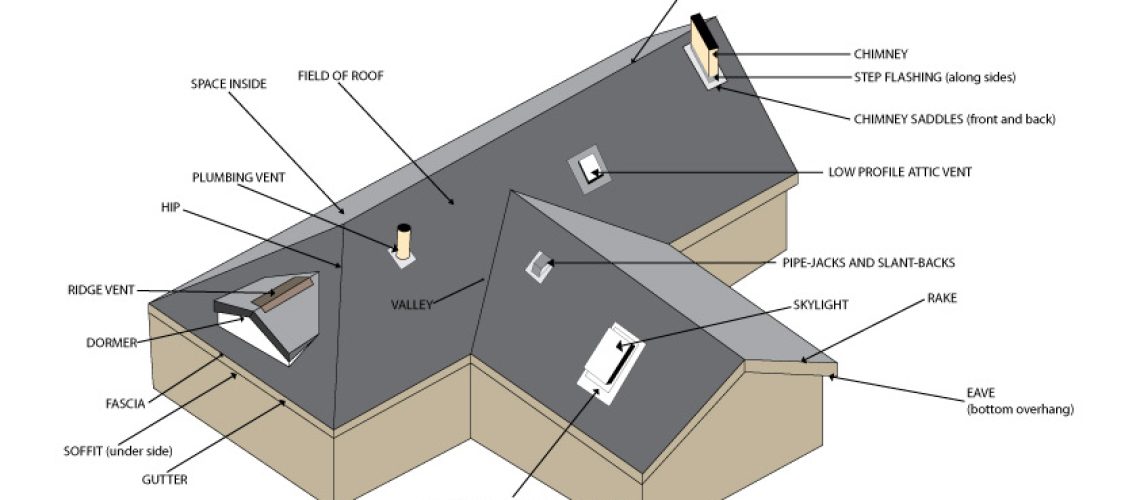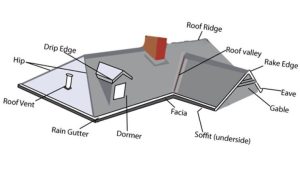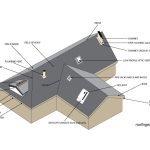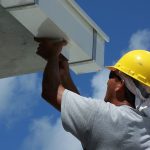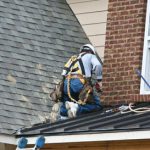Here Are Some Terms To Help You Learn The Roofing Lingo
Whether you’re building a new home and want a professional to install the roof or you already own a home and you’re needing a new roof installation due to damage or age.
Ever wonder what’s going on when the “roofing guys” are on your roof? Read on for a brief version of what’s happening up there.
A discussion of roofing comes with its own vocabulary. Below are some of the most common terms and their definitions. (Definitions from: here, here, and here)
- Deck: The surface installed over the supporting framing members to which the roofing is applied.
- Eaves: The horizontal, lowest edge of a sloped roof that extends beyond the exterior wall.
- Rakes– The vertical edges of gable-style roof planes.
- Flashing- Pieces of metal or roll roofing used to prevent seepage of water into a building around any intersection or projection in a roof such as vent pipes, chimneys, adjoining walls, dormers, and valleys.
- Step flashing: Flashing application method is used where a vertical surface meets a sloping roof plane. Individual pieces extend on the roof plane and up the vertical surface and are overlapped and stepped up the roof as shingles are applied.
- Drip Edge: A non-corrosive metal lip that keeps shingles up off the deck at roof edges and extends shingles out over eaves and rakes
- Underlayment: A layer of asphalt-saturated felt (sometimes referred to as tar paper) is laid down on a bare deck before shingles are installed to provide additional protection for the deck.
- Valley: The internal angle formed by the intersection of two sloping roof planes to provide water runoff.
- Ice dam: Condition formed at the lower roof edge by the thawing and refreezing of melted snow on the overhang. Can force water up and under shingles, causing leaks.
- Ice-and-water shield: Thin, self-adhering rubberized asphalt membrane applied before underlayment, but over the drip edge at the eaves to help mitigate potential leaks from ice dams
- Ridge: The uppermost, horizontal external angle formed by the intersection of two sloping roof planes.
- Sheathing: Exterior-grade boards used as a roof deck material.
A Roofer’s Guide: What Happens During Roof Preparation and Shingle Placement
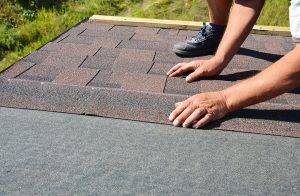
- Preparation
- The old shingles and flashings will be removed.
- The decking will be swept as clean as possible. Loose sheathing will be reattached, and sheathing will be inspected for damage prior to new shingles being placed.
- Barrier Placement
- A drip edge was installed at the eaves
- The ice-and-water membrane was applied over the drip edge at the eaves
- Metal flashing and ice-and-water membrane applied in the valleys as well as any protrusions (plumbing stacks and attic vents, for example) from the roof
- The ice-and-water membrane was applied to the rakes
- Felt underlayment is applied to the whole roof, each strip overlapping the previous layer by several inches
- The drip edge applied to the rakes, OVER the ice-and-water membrane and underlayment
- Shingle Placement and Finishing
- Starter shingles placed along the eaves extending past the fascia, drip edge, ice-and-water barrier, and underlayment
- Shingles applied in overlapping rows from eaves to ridge
- Metal step flashing is applied with shingles at joints where the roof meets a wall or chimney.
- Roofers finish roofs using specially-made pieces for capping the ridge.
- Roofers make a final pass across the entire roof, ensuring every nail is sealed with a professional strength sealant.

